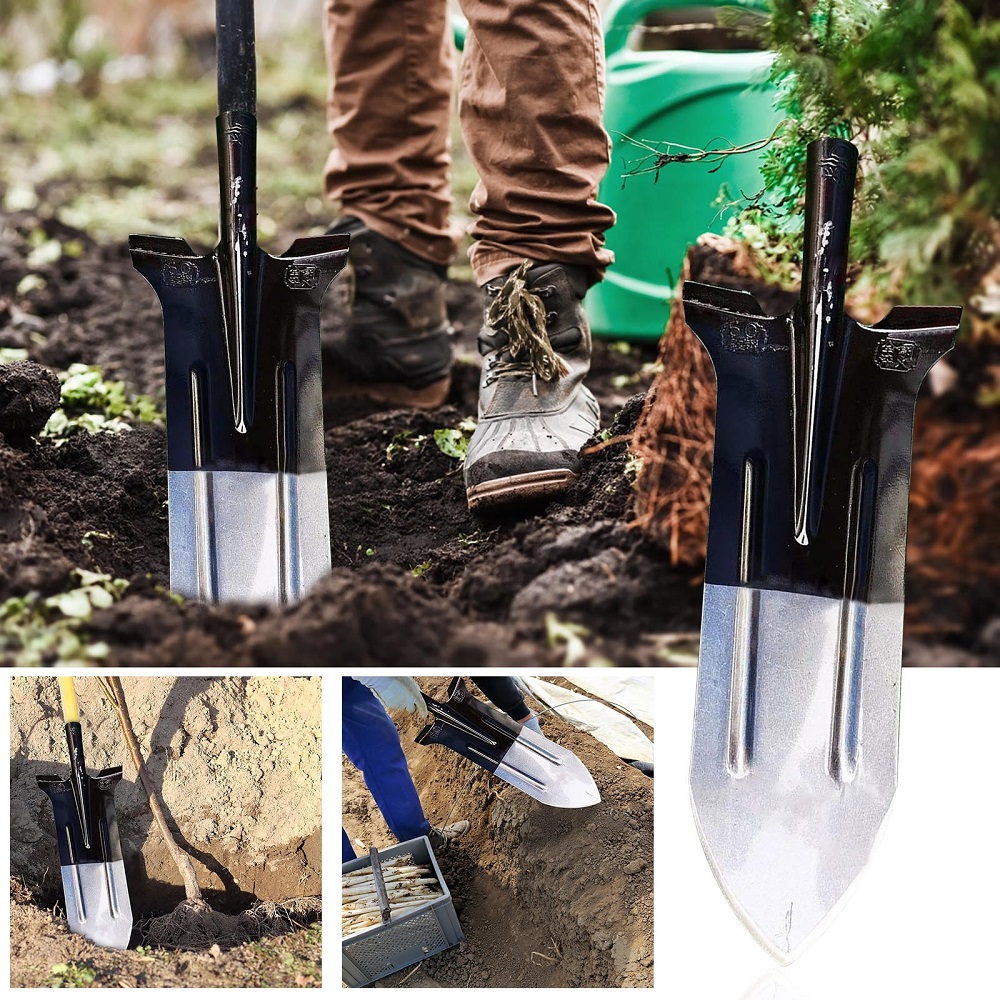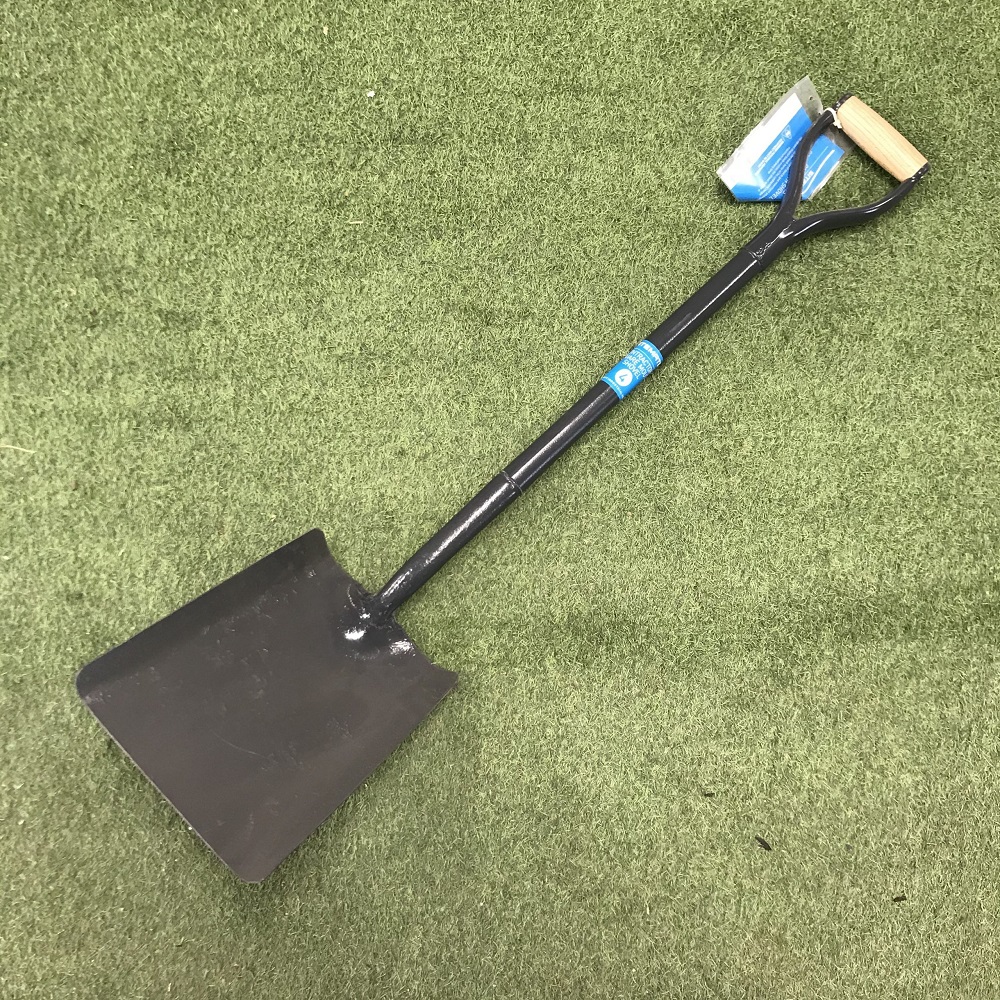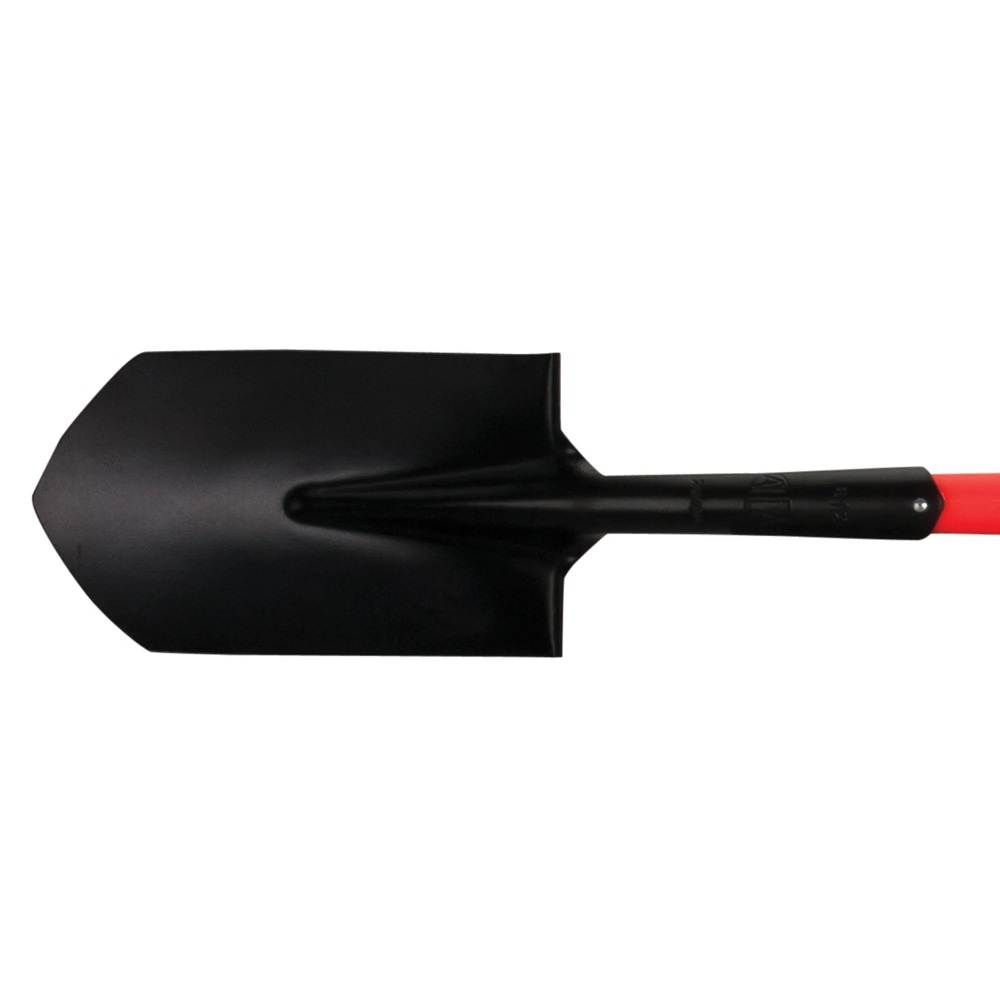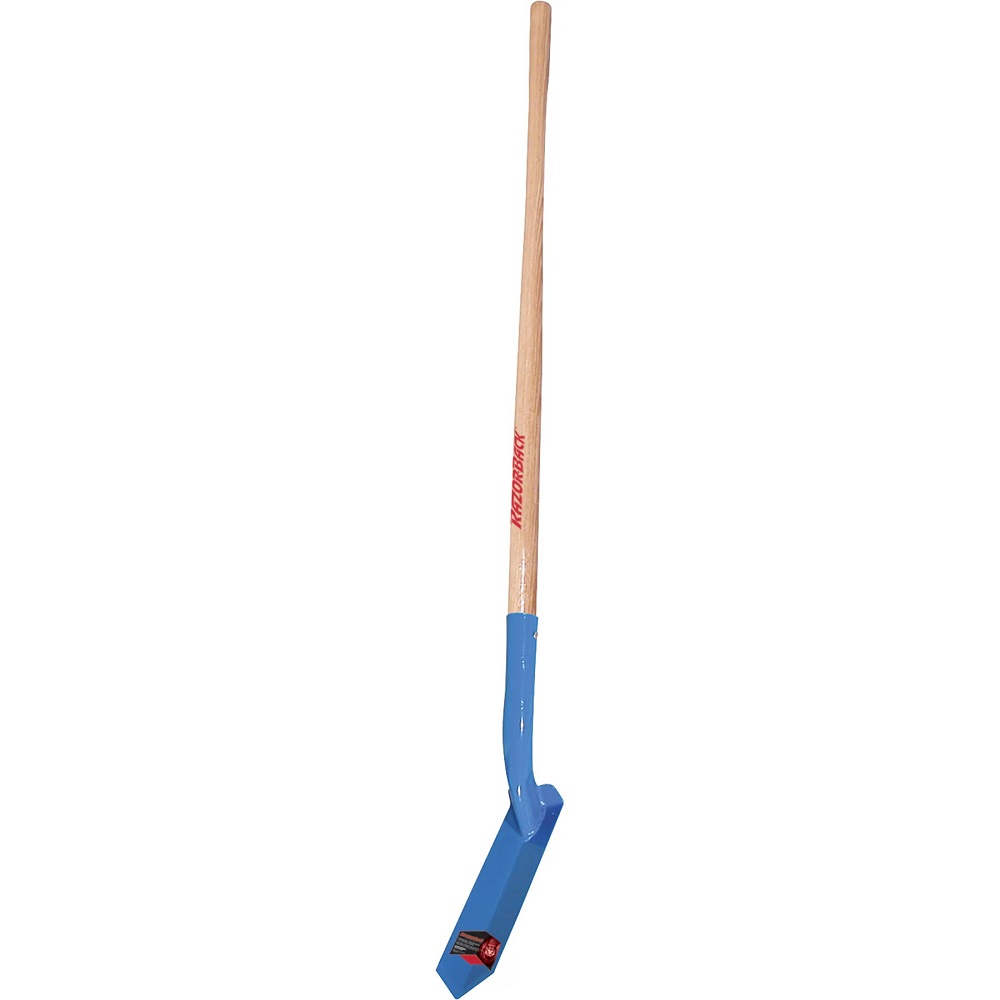Introduction to Trenching Shovels
A trenching shovel is a tool designed for narrow, precise digging. Its long, sharp blade cuts into the soil, making it ideal for digging trenches. Unlike regular shovels, a trenching shovel has a narrow head. This head shape allows users to dig deep without disturbing the surrounding area too much.
For gardeners and construction workers, a trenching shovel is a staple. It helps lay pipes, install irrigation, and form neat garden beds. The handle usually comes in different lengths. This suits a variety of digging depths and user heights. The sharp tip of a trenching shovel penetrates the earth easily. This makes starting a trench simpler. With proper technique, the shovel can also help pry out rocks and roots.
Trenching shovels stand out for their efficiency and precision. Whether you’re a professional or a DIY enthusiast, understanding this tool is key. Our guide will show you how to select, use, and care for trenching shovels. We will cover each aspect, from features to safety, giving you a complete toolbox of knowledge.

Key Features of a Trenching Shovel
A trenching shovel must possess certain features for peak performance. These key features ensure efficiency and ease during the digging process.
Narrow Blade Design
The most striking feature is the blade’s narrow design. This design allows for precise cuts in the soil. It helps prevent damage to nearby plants or pipes.
Sharp Blade Tip
A sharp, pointed tip characterizes a high-quality trenching shovel. This tip cuts into tough soil with ease. It also helps in breaking through roots and rocky patches.
Long Handle
Trenching shovels often come with long handles. The length of the handle offers better leverage during digging. It also reduces strain on the user’s back.
Sturdy Build
A good trenching shovel has a durable construction. Quality materials withstand the wear and tear of regular use. They also make the shovel last longer with fewer repairs.
Comfortable Grip
Handles with a comfortable grip are important. They allow for longer periods of work without hand fatigue. They also improve control over the shovel.
Foot Platform
Some trenching shovels have a foot platform. This feature allows users to apply more force while digging. This is helpful when working with compact or hard soil.
How to Choose the Right Trenching Shovel
Choosing the right trenching shovel is vital for successful digging tasks. When you shop for a trenching shovel, consider several factors. These will influence how well the tool meets your needs.
First, think about the job at hand. What is the trench depth and width you’re aiming for? This will determine the size of the shovel you need. A narrow blade is perfect for small, precise trenches. A wider blade suits larger jobs.
Next, examine the blade material. A strong steel blade resists bending and breaking. It will last longer even with heavy use. Carbon steel blades are often the strongest. Look for corrosion-resistant coatings too. These will protect the shovel over time.
Check the handle length and material. A longer handle provides more leverage and reduces back strain. Handles can be wood, fiberglass, or metal. Fiberglass is lightweight and durable. Wood offers a classic feel and flex. Metal is sturdy but can be heavier.
Look for a comfortable grip. Rubber or soft plastic grips can reduce hand fatigue. They offer better control during long hours of work.
Assess the foot platform. If you plan on digging in hard soil, a solid foot platform is necessary. It helps you apply more force with less effort.
Lastly, consider your own height and strength. Make sure the shovel feels comfortable and not too heavy. Remember, a tool suited to your build will make work easier and more efficient.
By keeping these points in mind, you’ll find a trenching shovel that makes your project easier. It’s worth taking the time to choose right. A suitable trenching shovel saves time and effort in the long run.

Proper Techniques for Using a Trenching Shovel
Using a trenching shovel the right way can prevent injuries. It also ensures the job is done efficiently. Here are steps to use a trenching shovel effectively:
- Start with a Guide: Mark out your trench line. Use string, spray paint, or stakes. This step keeps your work straight.
- Position Your Feet: Stand with one foot slightly ahead of the other. This stance offers stability.
- Grip Firmly: Hold the handle near the end with one hand. Place the other hand closer to the blade. This grip gives you control.
- Slice the Soil: Push the shovel’s sharp tip into the soil with your foot. Then, rock the handle back and forth. This action slices into the earth.
- Leverage Is Key: Use your back foot to push down on the foot platform. This motion digs the blade deeper without strain.
- Remove the Soil: Lift the loose soil out. Throw it to the side of your trench. Keep it neat to avoid extra work later.
- Repeat the Process: Move along the trench line. Repeat these steps to continue digging.
Remember to keep your back straight while lifting. Keep the pace steady to avoid fatigue. Take breaks if needed to rest. These practices reduce the risk of muscle soreness.
Safety Tips When Using Trenching Shovels
Safety should always come first when handling trenching shovels. Here are vital tips to ensure you stay safe on the job:
- Wear Appropriate Gear: Don protective gear such as gloves, safety glasses, and sturdy boots. Gloves prevent blisters and improve grip. Safety glasses protect your eyes from flying debris. Sturdy boots guard your feet when using the foot platform.
- Inspect Your Tool: Before you dig, check your shovel for damage. Look for cracks or bends in the blade. Ensure the handle is secure. A damaged shovel can lead to accidents.
- Stay Alert: Be aware of your surroundings. This prevents you from accidentally striking underground utilities or bystanders.
- Use Proper Form: Keep your back straight and lift with your legs. Avoid twisting your torso when moving dirt. Proper form minimizes the risk of back injury.
- Pace Yourself: Digging trenches can be tiring. Take breaks to rest and hydrate. This keeps you alert and reduces mistakes.
- Keep a Clean Workspace: Remove rocks or debris from your trench area. This ensures you have a safe space to step and work.
- Be Cautious in Bad Weather: If conditions are wet or icy, be extra careful. Slippery ground increases the risk of falls and injuries.
Following these safety tips when using a trenching shovel will prevent accidents and injuries. Safe practices will also improve the overall efficiency and quality of your work.
Maintenance and Care for Trenching Shovels
To keep your trenching shovel in top shape, follow these maintenance tips:
- Clean After Each Use: Rinse off dirt and debris from the blade and handle. Dry it well.
- Inspect Regularly: Before and after use, check for signs of wear or damage. Fix them promptly.
- Sharpen the Blade: A sharp blade makes digging easier. Use a file or sharpening stone.
- Store Properly: Keep your shovel in a dry, protected area to prevent rust and damage.
- Handle Care: Treat wooden handles with linseed oil to avoid splinters. Check fiberglass or metal for cracks.
- Tighten Connections: Ensure the blade and handle stay firm. Tighten screws or bolts as needed.
- Lubricate Moving Parts: If your shovel has a collapsible or adjustable handle, lubricate the joints.
By caring for your trenching shovel, it will serve you well for years. Regular maintenance saves time and money on replacements. Good care also ensures your shovel is ready for any job.

Common Projects for Trenching Shovels
Trenching shovels have a variety of uses across different projects. Here are some common applications:
- Laying Pipes and Cables: They’re perfect for creating narrow trenches for pipes and cables.
- Building Irrigation Systems: Essential for trenching in gardens to install irrigation lines.
- Forming Garden Beds: They help create straight, precise edges for garden beds.
- Installing Fence Posts: Their narrow blades are ideal for digging post holes.
- Edging Landscape Areas: Trenching shovels make clean lines between lawn and gardens.
- Creating Drainage Paths: They dig trenches to direct water away from structures.
These tools are indispensable for anyone involved in landscaping, gardening, or utility work. With a trenching shovel, tasks are completed faster and with greater precision. Always remember to choose the right shovel for your project, and to use it safely and effectively.
Trenching Shovel Vs. Traditional Shovels: When to Use Each
When it comes to digging, not all shovels are the same. The trenching shovel and traditional shovel serve different purposes. Knowing when to use each can make your job easier and more efficient.
A trenching shovel is narrow with a long blade. It’s for digging deep, straight trenches with precision. Such trenches are for pipes, cables, or drainage. The trenching shovel cuts through soil with little disturbance to the surrounding area. It’s your go-to when you need to dig a narrow, defined space.
On the other hand, traditional shovels have a broader shape. They move a larger amount of soil at once. These shovels are ideal for general digging tasks. You use them for planting, turning soil, or moving loose materials like sand and gravel. Their wide, flat blades make them unsuitable for precise trench work.
Here’s a quick guide on when to use each:
- For precise, narrow trenches: Choose a trenching shovel.
- For planting or transferring soil: A traditional shovel works best.
- When installing cables or pipes: Use a trenching shovel for a professional job.
- For general garden maintenance: The traditional shovel is your friend.
Remember, the right tool saves time and effort. It also helps prevent muscle strain or backaches. Use a trenching shovel for specialized tasks and a traditional shovel for more common gardening jobs. Always keep both in your tool shed for varied projects.
